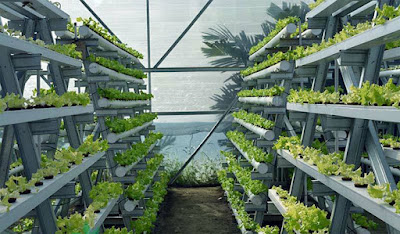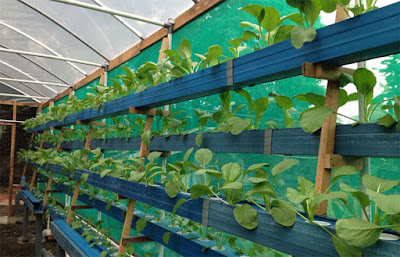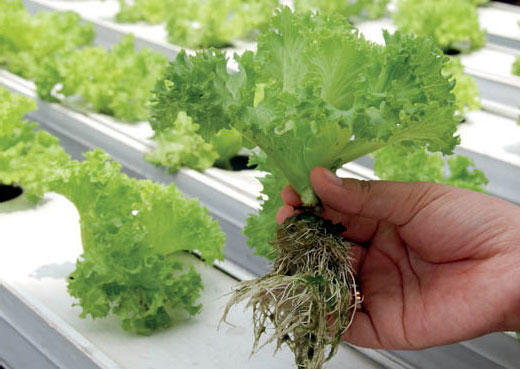What Is Hydroponic Gardening
Hydroponic Gardening
Hydroponic gardening : Cultivation of plants in nutrient solution rather than in soil.Hydroponics is a subset of hydroculture and is a method of growing plants using mineral nutrient solutions, in water, without soil. Terrestrial plants may be grown with their roots in the mineral solution only, or in an inert medium, such as perlite or gravel. The nutrients in hydroponics can be from fish waste, normal nutrients, or duck manure.
 |
| hydroponic gardening indoor |
What is Hydroponics ?
Hydroponic gardening is basically a method of growing plants without soil. Instead of having to compete with other plants for nutrients in the soil, hydroponic plants thrive on a nutrient solution that is administered directly and which contains all the necessary minerals. Hydroponic gardening also cuts down on the amount of weeding and digging that is compulsory with soil gardening. Overall, hydroponic gardening gives you more control over the temperature, the light , the water, the nutrient intake and the pests which effect your non-hydroponic gardening techniques.Hydroponic gardening is an easy, environmentally-friendly way to grow a wide variety of healthy plants in a relatively small space.
The benefits of hydroponic gardening include:
- With hydroponic gardening, plants grow more rapidly then plants in soil because it has direct access to essential plant nutrients and water and other plants don't have to compete for nutrients as plants in soil do.
- Indoor hydroponic gardening is possible year-round.
- With hydroponic gardening, plants are grown in a relatively disease-free, pest-free medium.
- With hydroponic gardening, plants can be grown in small spaces - in closets, on apartment balconies, on kitchen counters and in classrooms.
- With hydroponic gardening, plant roots are fixed to the grow medium, or grow tray, by its roots giving them unlimited access to nutrients. This results in plants that yield superior vegetables and flowers with smaller roots, compared to plants grown in soil.
- Hydroponic gardening makes gardening possible in low soiled areas, rocky terrains and small spaces like apartment balconies.
- Hydroponic gardening makes gardening possible indoors with artificial lighting.
- Hydroponic gardening demands less labor - no digging, soil maintenance or weeding is required.
 |
| hydroponic vegetables |
This is one of the major considerations in hydroponics gardening since it sustains the plants. One has to make sure that this nutrient solution maintains a pH level of 5 to 6 after dilution. In hydroponics gardening, the plants should be watered more than three times a day. this is usually done using a pump and timer.
If your hydroponics garden is located indoors, the most suitable temperature is between 71 to 76 degrees Fahrenheit. Of course, this temperature may change depending on the different types of plant you are working on, e.g. tropical plants.
Place your plants somewhere they can receive ample amount of light. Otherwise artificial light must be used. High pressure Sodium lights or bulbs are a suitable substitute for natural light.
Humidity is good. When the room’s temperature rises, the air will be able to hold the sufficient amount of moisture your plants will need.
 |
| hydroponics gardening indoor |
Many gardeners are beginning to switch to Hydroponics gardening for many different reasons. These types of gardens are small and can easily be grown inside and are perfect for most vegetables, especially the red tomato. Also the equipment required for Hydroponics gardening is not expensive and they are relatively easy to manage.
Hydroponics gardening is the growing of plants without soil, in other words, “dirtless gardening”. There are many methods of Hydroponics gardening, most of which work better than regular soil gardening because it is easier to give the plant exactly what it needs when it needs it. Plants will only receive what you give them; therefore you will be able to regulate the pH, nutrients, nutrient strength, water amount, and light amount. This makes it imperative that you research the kind of plants you will be growing so you know what they need to survive.
Hydroponics gardening is only as difficult as you make it. It can be complicated if computers with sensors are used to control water cycles, nutrients, and light for the plants. However, it can also be as simple as a hand watered bucket with a single plant.
The normal home Hydroponics system is usually made up of a few basic things: a growing tray, light (natural or artificial), a reservoir, a water controlled pump for watering (or some type of watering equipment), and some form of air pump to give oxygen to the nutrients.
The growing medium used in Hydroponics gardening can be any number of things, such as Rockwool, perlite, coconut fiber, gravel, sand, vermiculite, or even air. You can get instructions from a gardening store or online or buy separate parts and build your own. There are also kits already assembled for sale in gardening supply stores.
 |
| hydroponic gardening |
There are certain micro-nutrients that are necessary for healthy plant growth including magnesium, sulfur, calcium, cobalt, boron, iron, copper, manganese, and zinc. These nutrients are absolutely essential to plants and if missing could cause the food to not be as healthy and in some cases even cause health problems for those who eat it. It is very important that you use a quality fertilizer when Hydroponics gardening.
Another important aspect of Hydroponics gardening that must be closely regulated is the pH balance. When the pH balance varies the plants will lose the ability to absorb nutrients that it needs. The ease with which the pH in Hydroponics gardening is tested and controlled give it a huge advantage over regular dirt gardening.
Even though there are hundreds of different variations, Wick, Water Culture, Ebb and Flow, Drip, N.F.T., and Aeroponic are the six most basic types of Hydroponics gardening systems.
Hydroponics gardening is easy, affordable, and you can have fresh produce, flowers, herbs & spices all year long.
They primary concern to recollect about garden equipment is we may need it, yet we don't generally require it.chicago electric chainsaw
ReplyDeleteThe sorts of lawn weeds and how to viably evacuate at that point and ward off them Wat zones the distinctive kinds of turfgrasses develop in and what compose is most appropriate for your territory, and so on.How Does Your Garden Mow
ReplyDelete